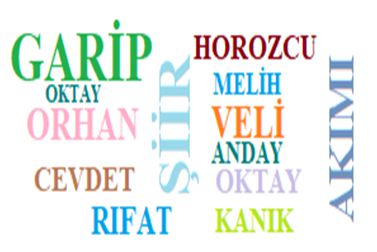 Keywords: Turkish literature, Republican era, Garip movement, poetry, modern poetry movement, pioneers (Orhan Veli Kanık, Oktay Rifat Horozcu, Melih Cevdet Anday).
Keywords: Turkish literature, Republican era, Garip movement, poetry, modern poetry movement, pioneers (Orhan Veli Kanık, Oktay Rifat Horozcu, Melih Cevdet Anday).
Description;
This article explains the formation process of the Garip movement, the characteristics it brought to modern Turkish poetry, and who its pioneering representatives were.
The Garip Movement and Its Characteristics
Emerging in the 1940s (20th century) Turkish literature, the poetry understanding introduced by representatives known as the first innovators, such as Orhan Veli Kanık (1914-1950), Oktay Rifat Horozcu (1914-1988), and Melih Cevdet Anday (1915-2002), is a modern poetry movement that has continued to influence Turkish poetry with the innovations and changes it brought. These three young innovative poets, whose friendship began during their school years, marked the starting point of a transformation in poetry during the Republican era. In 1941, they gathered their poems in a joint book called "Garip", thus initiating this poetry movement and its revolutionary transformation.
The main characteristics of the Garip movement are as follows:
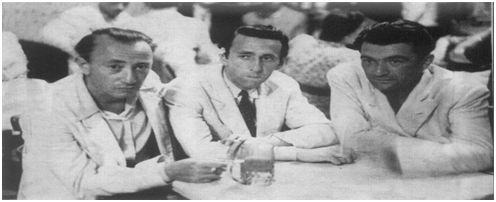
Pioneers of the Garip Movement
Pioneers of the Garip Movement
Orhan Veli Kanık (1914-1950)
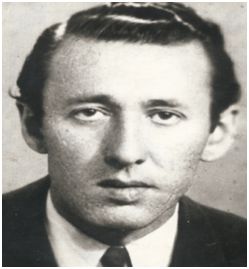 Born on April 13, 1914, in Istanbul, Orhan Veli Kanık, known as the founder of the Garip movement, graduated from Ankara Gazi High School in 1932 and left his studies at the Faculty of Philosophy of Istanbul University unfinished. Between 1936 and 1942, he worked as a civil servant. After resigning, he started publishing the magazine Yaprak. Aiming to fundamentally change the structure of Turkish poetry, he brought street language into his poems. Initially writing in syllabic meter, he later fully embraced the principles they advocated in their book "Garip." He passed away from a brain hemorrhage in Istanbul on November 14, 1950, four days after falling into a pit dug by the municipality in Ankara while drunk.
Born on April 13, 1914, in Istanbul, Orhan Veli Kanık, known as the founder of the Garip movement, graduated from Ankara Gazi High School in 1932 and left his studies at the Faculty of Philosophy of Istanbul University unfinished. Between 1936 and 1942, he worked as a civil servant. After resigning, he started publishing the magazine Yaprak. Aiming to fundamentally change the structure of Turkish poetry, he brought street language into his poems. Initially writing in syllabic meter, he later fully embraced the principles they advocated in their book "Garip." He passed away from a brain hemorrhage in Istanbul on November 14, 1950, four days after falling into a pit dug by the municipality in Ankara while drunk.
Poetry: Listening to Istanbul, A Strange Orhan Veli, My Addiction, Like an Epic, The New One, Opposite, Nasrettin Hoca Stories
Prose: Prose Writings, La Fontaine, Our Literary World, Our World of Art and Literature, The Branch We Know
Oktay Rifat Horozcu (1914-1988)
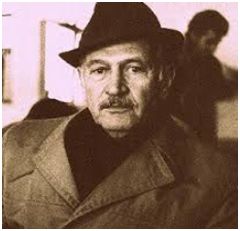 Born in Trabzon, this literary figure graduated from Ankara Boys' High School and the Faculty of Law at Ankara University. Continuously seeking to renew himself (trying every form), he focused on social issues. His language is simple, and he wrote mostly four- or five-line poems, drawing power from events and satire.
Born in Trabzon, this literary figure graduated from Ankara Boys' High School and the Faculty of Law at Ankara University. Continuously seeking to renew himself (trying every form), he focused on social issues. His language is simple, and he wrote mostly four- or five-line poems, drawing power from events and satire.
Poetry: To Live and Die, Poems on Love and Bohemianism, More or Less, The Crow and the Fox, Street with a Forelock, With Elif, Istanbul Folk Song
Novel: Danaburnu, From a Woman's Window
Play: The Spotted Rooster, Rain Distress
Melih Cevdet Anday (1915-2002)
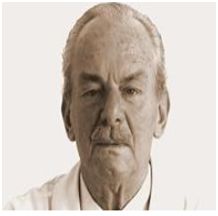 Born as Muzaffer Melih in Çanakkale in 1915. He started his education at the 35th Elementary School in Mühürdar, Kadıköy. He continued at Kadıköy Sultanisi for secondary school, where he began writing. He completed high school in Ankara due to his father's job. Meeting Orhan Veli Kanık and Oktay Rifat there, Anday worked as a civil servant, photographer, teacher, and journalist. Awarded multiple prizes, he was described by UNESCO's Courier magazine as a literary figure on par with Cervantes, Dante, Tolstoy, and Kawabata.
Born as Muzaffer Melih in Çanakkale in 1915. He started his education at the 35th Elementary School in Mühürdar, Kadıköy. He continued at Kadıköy Sultanisi for secondary school, where he began writing. He completed high school in Ankara due to his father's job. Meeting Orhan Veli Kanık and Oktay Rifat there, Anday worked as a civil servant, photographer, teacher, and journalist. Awarded multiple prizes, he was described by UNESCO's Courier magazine as a literary figure on par with Cervantes, Dante, Tolstoy, and Kawabata.
Poetry: Death of the Boat, Words, Gilgamesh Beyond Immortality, Familiar World, In the Sun, In the Rain, Lie, The Tree That Lost Its Peace, Şinnanay
Novels: Before the Wedding, Rainy Street, Dead-End Street of Widows, Three Men in One Night, The Idlers, Secret Order, The Diary of Jesus, Raziye
References
Mehtap Erdil
Yücel Cultural Foundation
Voluntary Author
YKV Content:1611